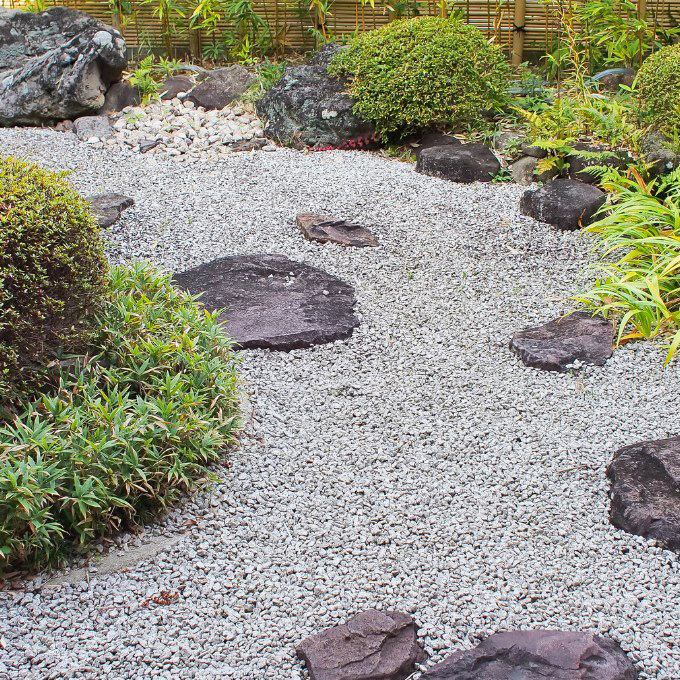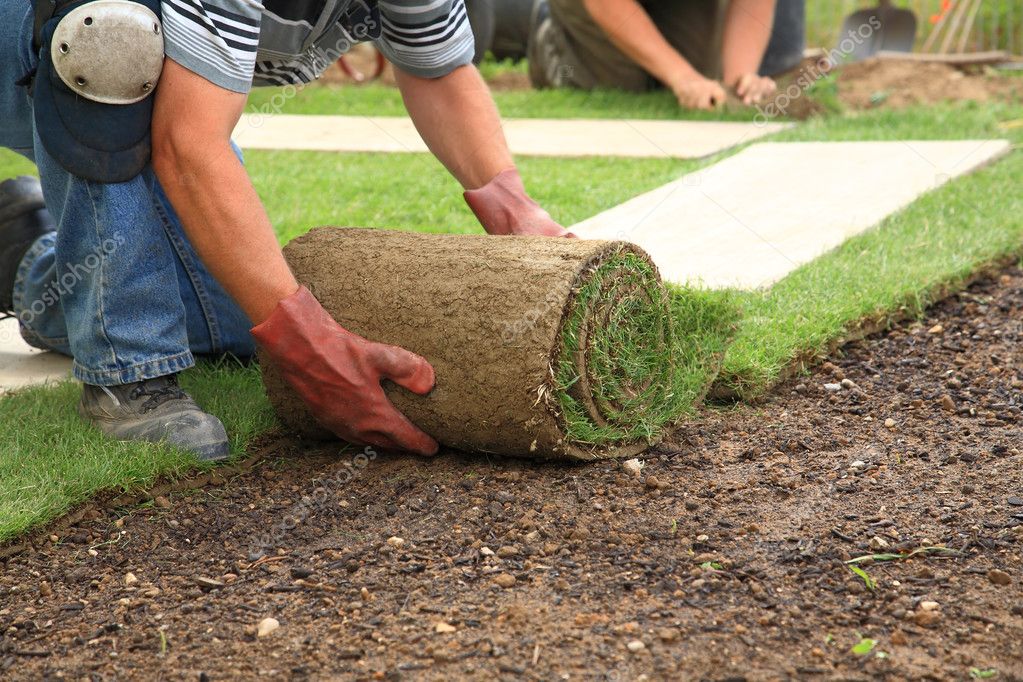Step 1: Planning
Paver Installation start by sketching out a diagram of the area to be paved.
Record all of the dimensions and note any existing structures such as your home, stairs, or other paved areas.
Visit your local concrete paver manufacturer, paving contractor, or dealer to view product samples. Show them your sketch and discuss the various shapes and pattern options available. Keep in mind that some shapes and laying patterns require less cutting.
Determine the amount of pavers, edge restraints, bedding sand, base material, geotextile and other materials you’ll need for the project. Your concrete paver manufacturer or dealer should be able to help you calculate this. Be sure to consider any waste you’ll have in materials due to cuts.
Plan out your site and the flow of materials to determine where you place them when they are delivered. The materials are heavy so you’ll want to have them delivered to a safe and convenient location close to the job site.
You will need the following tools and equipment:
- Gloves
- Safety glasses
- Carpenter’s chalk line
- Tape measure
- Push broom
- Wood stakes
- Rubber mallet
- Shovel
- Steel rake
- Wheelbarrow
- String line
- Spray paint
- Level
- Carpenter’s Square
- 2 pieces of 1” OD PVC Pipe (screed pipe), 8 feet long
- 1 piece of 2”x4” kiln dried lumber (screed board), 8 feet long
- Plate compactor (rent)
- Stone cutter or masonry saw (rent)
Step 2: Site Preparation
Contact local utility locating service to mark all underground services. These services are usually free but typically require advance notice. They may not be able to locate in-ground sprinkler systems, so be sure to mark those on your own.
Mark out the area to be paved. You can use a garden hose or spray paint to layout the shape and curves of the area. To form a circle, use a stake at the center point and use string line and spray paint to mark out the desired radius.
To guide the paving lines, it is best to square off a 90° corner. If there is not an existing structure to measure off of, use a “3-4-5 triangle” method. Begin by measuring 3′ along a corner and 4′ from one side, adjusting them until the distance of the diagonal line is 5’ long. The angle opposite the 5′ side will be 90°. A 24” carpenter’s square can also be used. Note: You will need to do this again when setting the edging and laying the pavers.
Make sure to allow an additional 6” on each side of the pavement (except where the pavement abuts a wall, curb, or foundation, etc.) to allow for drainage and edge restraints.
Set stakes along the perimeter and connect them with the string line.
Level the strings around the project using a string line level.
Step 3: Excavation
If you have a large area to excavate, consider hiring a contractor. They can haul away and dispose of the excavated material. For smaller areas, a shovel and some hard work will get the job done.
Remove grass, roots, large rocks, etc.
Use a flat shovel or spade to skim off ½” to leave the subgrade soil undisturbed.
The depth of the excavation depends on the project and the type of soil. The base under the pavers must be thick enough to support weight and avoid rutting over time.
Expand the excavation laterally beyond the perimeter of the finished pavement by the thickness of the base to provide a shoulder on which the edge restraint will be installed.
Determine whether you have granular or clay type soil. Granular soils are best for drainage and strength and clay soil is weaker are requires a thicker aggregate base.
Determine the elevation and slope of your finished pavement. It should be approximately ¼” above the surrounding area to allow for drainage. The pavement must be sloped ¼” per foot to encourage water to run off the pavement. Establish the slope by pulling string lines across the width of the excavated area and leveling them using a line level. On the side you wish to slope towards (make sure it is sloping away from your house), move the string lines down ¼” for every foot that the pavement is wide. For example, foot a 4’ wide walkway, you will need to lower the string 1”.
Tip: Since the string lines will need to be removed in order to compact the subgrade, mark their position on the stakes. You can easily reset the string lines for other steps of the installation.
Increase base thickness by 50% in areas where the ground is subject to freezing temperatures. Increase excavation depth to account for additional base thickness.
Compact the excavated subgrade soil with a plate compactor to create a firm and stable foundation for the base.
Step 4: Install the Base
Base installation is the most important step in a successful Paver Installation.
Fill in the excavated area with coarse, angular gravel in layers, compacting and sloping between each layer. Compacting in thinner layers will reduce the potential for long term settlement.
Use the 2×4 and string lines as a guide to assure a perfect base installation.
Proper compaction and a smooth pitched surface base is vital…do not rush this step!
Tip: For every 100 square feet of area, you will need the following amount of base material:
- 4” thick – 2 tons
- 6” thick – 3 tons
- 8” thick – 4 tons
- 12” thick – 6 tons
Step 5: Install Edge Restraints
Since pavers are set loose in sand, they must be secured in place along the perimeter. A house foundation or curb is suitable but for any edge that does not have this, such as along grass, you will need to install an edge restraint.
Position your edge restraint and nail it into the aggregate base. Be sure that all square corners are exactly 90-degree angles. You can use the 3-4-5 triangle method noted above.
Step 6: Place the Bedding Sand
Before the pavers can be placed, a setting bed of washed concrete sand must be installed and leveled. This process is called screeding.
Add the bedding sand and smooth it out (do not compact) using the PVC pipes as guides or rails and the 2×4 board. The top of the pipes should be 1 ¾” to 2” inches below the finished elevation to allow room for the pavers to be laid on top at your final elevation.
Do approximately 6’- 8′ sections at a time and be sure to lay pavers before preparing the next section of sand. Use a trowel to fill in the gaps left behind by the pipes after you remove them.
Do not walk on or disturb the freshly placed sand.
Step 7: Lay the Pavers
Most pavers can be installed in a variety of laying patterns.
Lay the pavers on top of the smooth sand, beginning at the 90-degree angle you established previously.
Place the pavers on the screeded sand bed along a straight line in the pattern you selected.
Install the pavers “hand-tight” so that the joints between the pavers are about 1/8” wide.
Hold the paver so the bottom 1/4″ to 1/2″ clicks against the top edge of the paver already in the sand. Release your grasp dropping the paver directly downward. Do not slide the paver across the sand.
Every couple of feet, check to ensure pattern lines are straight and spacing is consistent.
Tip: Always select pavers from different layers and from different cubes to ensure even distribution of color.
Tip: For pavements with curves, continue the pattern just beyond the width of the pavement. Mark and cut the pavers along the perimeter to accommodate the curve.
Step 8: Cutting Pavers
Once you have laid all the pavers that will fit your area, you may need to cut some to fit neatly along the edges of the pavement.
Measure and mark the pavers to be cut with a marking crayon. Always cut the paver in the shortest direction for a clean cut. Don’t be concerned if a cut is not perfect as jointing sand will fill the gaps.
Use your stone cutter for simple cross cuts or masonry saw for more precise cuts.
Always use safety glass, gloves, and a dust mask when cutting pavers. Review the cutter/saw manufacturer’s instructions carefully before attempting to use.
Step 9: Compact the Paver Installation
Using the plate compactor, make two passes over the installed pavers starting at the outside and working toward the center. This will seat the pavers, forcing sand up between the joint and completing the interlocking effect of the pavement system.
Spread additional sand over the surface and sweep into the joints, and compact again.
Repeat process until all joints are filled.
Tip: If your pavers have a textured surface, use a compactor with a urethane pad or place a sheet of geotextile or old low-pile carpet, over the surface before compacting to reduce scuffing.
Congratulations, you are finished! Review our maintenance section for information on proper care and cleaning of your new interlocking concrete pavement.






